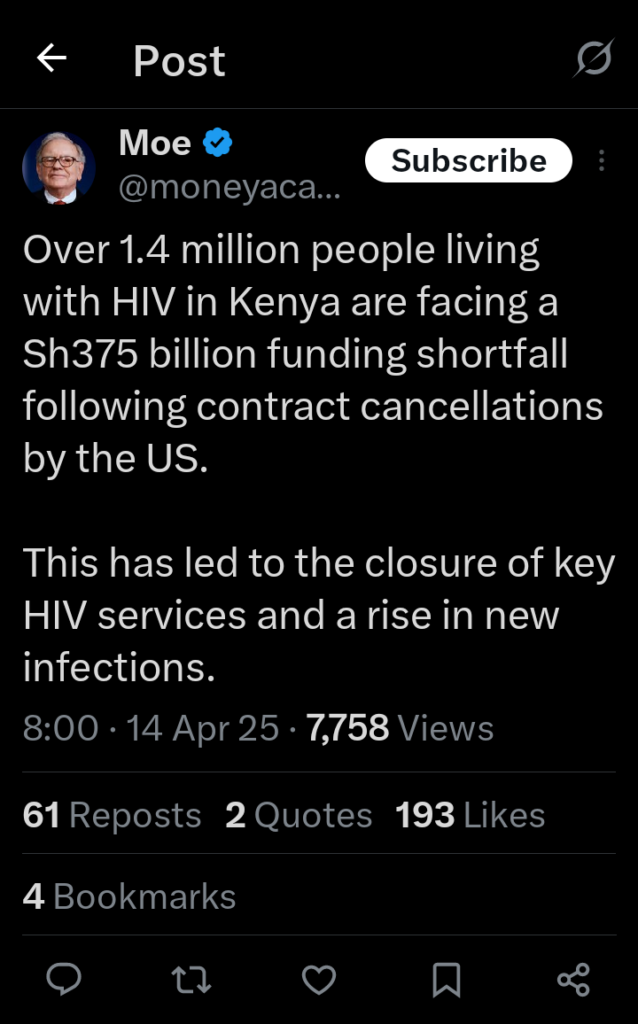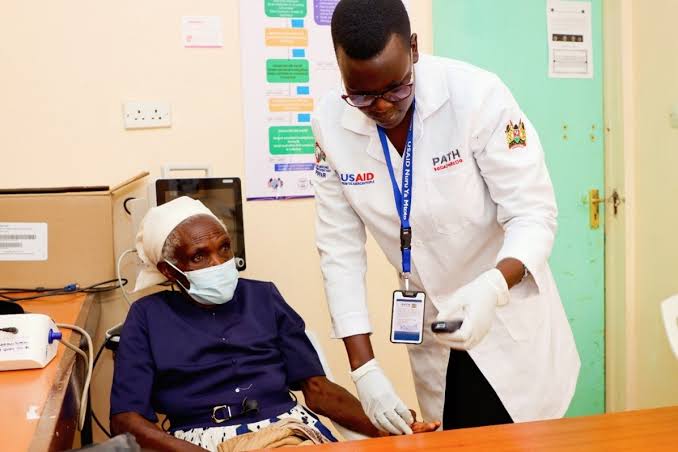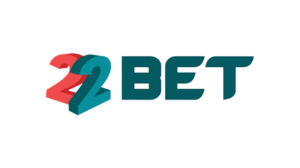Kenya is facing a serious health crisis after over Sh375 billion in funding for HIV programs was cut following US government contract cancellations. More than 1.4 million Kenyans living with HIV are now at risk, as the money that was supporting treatment and prevention services has dried up.
The US had been one of the largest donors through programs like PEPFAR, but the sudden freeze has disrupted operations across the country. This crisis is affecting individuals, health facilities, and entire communities. The result is clear: many services have been forced to shut down, and new infections are rising.
HIV Services Shut Down as Drug Shortages Hit
Many HIV centers, especially those offering antiretroviral therapy (ART), have either reduced operations or closed completely. Community-based programs, like those focusing on prevention for adolescent girls and young women, have been paused. People living with HIV are reporting medication shortages, while some like Alice Okwirry in Nairobi say their doses have been reduced to one month at a time.
These drug rationing measures have caused panic. Many are afraid they might run out of medicine altogether. Some patients have started hoarding the little medication they receive, while others report discrimination and breaches of privacy at some clinics.
In certain regions, the shortages of important HIV drugs like Nevirapine and test kits for early infant diagnosis are already being felt. Experts warn that unless urgent action is taken, stock-outs are likely to hit the country within months.

Government and International Partners Step In
The Kenyan government has acknowledged the crisis and started working with local and international partners to find solutions. On March 24, 2025, a detailed report was released outlining the steps being taken.
These include setting up an emergency health fund, adjusting the national budget to cover critical HIV services, and launching diplomatic talks with the US.
Meetings have also been held between the Ministry of Health, governors, lawmakers, and development agencies to find a coordinated response. Meanwhile, organizations like UNAIDS are exploring partnerships with countries like China to fill the funding gap.
Efforts are being made to strengthen Kenya’s own pharmaceutical industry so that the country becomes less dependent on foreign aid. Plans are underway to produce some essential drugs locally and improve integration of HIV care into general health services.
Civil Society Feeling the Pressure
Civil society organizations that used to receive US funding have also been hit hard. Many have had to reduce their activities or let go of staff. These groups play a big role in reaching vulnerable populations and monitoring HIV services.
With less support, they are struggling to meet the growing needs of the communities they serve.
Some groups, like ISHTAR, have received small temporary grants to keep running, but it’s unclear how long that support will last. Meanwhile, privacy concerns are rising, with groups like the Kenya Legal and Ethical Issues Network warning that health data must be protected during this chaotic period.
A Worrying Future if No Quick Fix is Found
While short-term supplies are still available for some drugs, this won’t last forever. The freeze on US aid has left warehouses full of medicine that cannot be distributed due to legal issues, and many programs are running on fumes.If funding isn’t restored soon or replaced with new sources, the country may face a full-blown HIV emergency.
Infections are already going up as prevention programs stop, and the stress is increasing among patients and health workers alike.
This situation shows how dependent Kenya has been on foreign aid for HIV care. Without quick and coordinated action, the gains made over the past 20 years risk being lost. The lives of millions now depend on how fast the government and international partners can come together and fix this growing crisis.





















Add Comment